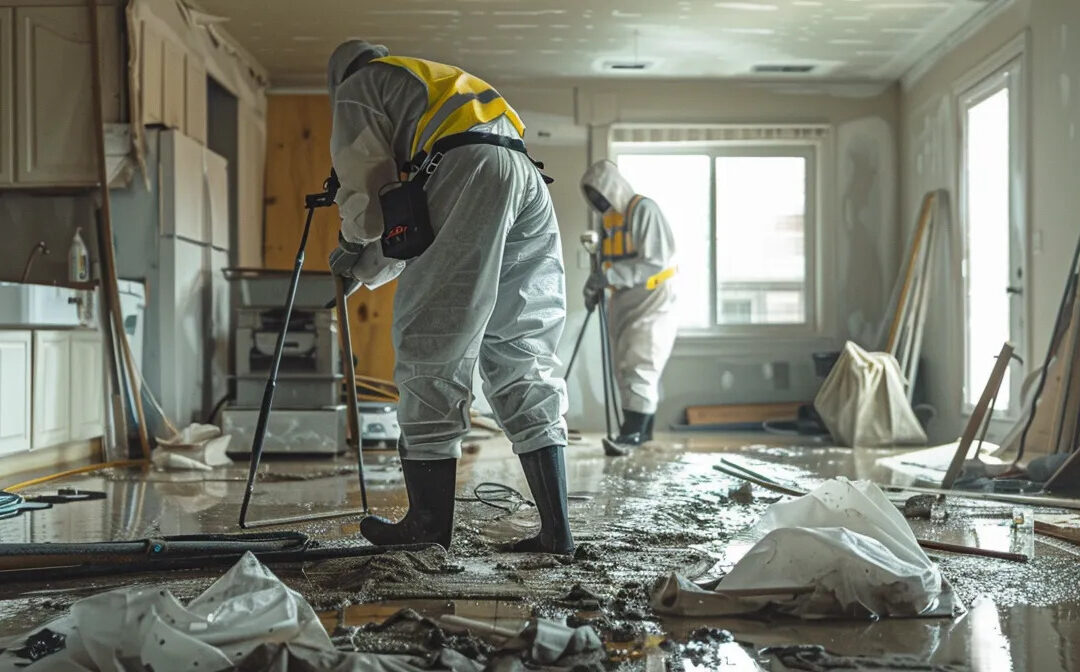Water damage can wreak havoc on your home, leading to costly repairs and potentially hazardous conditions. It’s essential to identify issues promptly and determine the best course of action. Often, professional intervention is required to effectively manage the problem and protect your investment. Below, we’ll explore how to spot the signs of water damage, the pitfalls of DIY restoration, and the benefits of calling the pros.
Recognizing the Signs of Water Damage in Your Home
Water damage can be subtle, but early detection is key to preventing costly repairs. Watch for stains on ceilings or walls, peeling paint, warped floors, or musty odors, as these can signal hidden moisture issues. Unexplained high water bills or the sound of dripping water may also indicate a leak. Regular inspections, especially after storms, help catch problems early.
Standing water, warped wood, or moisture-prone areas like basements and bathrooms require immediate attention. Checking pipes, seals, and appliances can prevent severe damage or mold growth. If you notice any warning signs, act quickly and consider professional Fort Mill water damage restoration services to mitigate further issues.
Understanding the Risks of DIY Water Damage Restoration
DIY restoration of water damage poses several risks, including extending the damage beyond the surface, causing long-term issues like mold and mildew growth, and exposing areas to moisture. Untrained individuals may not be able to handle these risks, and the lack of professional tools can leave moisture in areas overlooked.
Cross-contamination is another risk, as mold spores and contaminants can spread to other parts of the home. Proper disposal protocols are also crucial, as water-damaged materials can harbor toxic substances and violate local regulations. Improper handling can lead to environmental harm and legal and ethical responsibilities.
The Benefits of Professional Water Damage Restoration Services
Professional water damage restoration services offer comprehensive solutions to moisture issues, using specialized equipment like industrial dehumidifiers, air movers, and moisture meters. They identify and mitigate potential hazards, ensuring homeowner safety and protecting against further damage. Restoration services often work directly with insurance companies, streamlining claims and helping homeowners navigate financial aspects.
Their experience in assessing damage and providing detailed documentation maximizes the chances of a favorable insurance outcome. Professional teams also focus on restoration, often salvaging items that might otherwise be considered lost. Advancements in cleaning and restoration techniques improve the chances of restoring cherished belongings and valuable home parts to pre-damage conditions.
How to Choose the Right Water Damage Restoration Company
When selecting a water damage restoration company, consider several factors. Verify the company’s certification and insurance, as accreditation from recognized organizations like the IICRC is a reliable indicator. Look for companies with a solid track record and positive customer reviews, and consider recommendations from friends, family, or community groups.
Transparency is crucial, and companies with upfront estimates, detailed explanations, and clear communication should be top choices. Assessing the company’s responsiveness, especially 24/7 emergency services, is also important. Consider the scope of services offered, as experienced companies handle various types of water damage, including sanitation and mold remediation, providing a comprehensive approach to the restoration process.
Steps to Take While Waiting for Professional Help to Arrive
In the event of water damage, immediate action is crucial. Stop the water source if safe to prevent further damage, such as shutting off the main water valve or placing a bucket under a leak. Remove valuables and sensitive items from the affected area, such as electronics and personal documents, to a dry location.
If furniture is too heavy, lift it onto blocks or use aluminum foil to prevent soaking. Document the extent of damage for insurance purposes, taking photographs before cleaning or restoration. Remove standing water safely using mops, towels, or a wet/dry vacuum, but ensure electrical outlets are not in contact with water to avoid electrical shocks.
Altogether, when it comes to water damage in your home, relying on professional restoration services is often the wisest choice. Their expertise, equipment, and experience can prove invaluable in safeguarding your property and health. As you address the immediate challenges, choosing the right company and understanding what to do in the meantime will set you on the path to a successful recovery.

Recent Comments